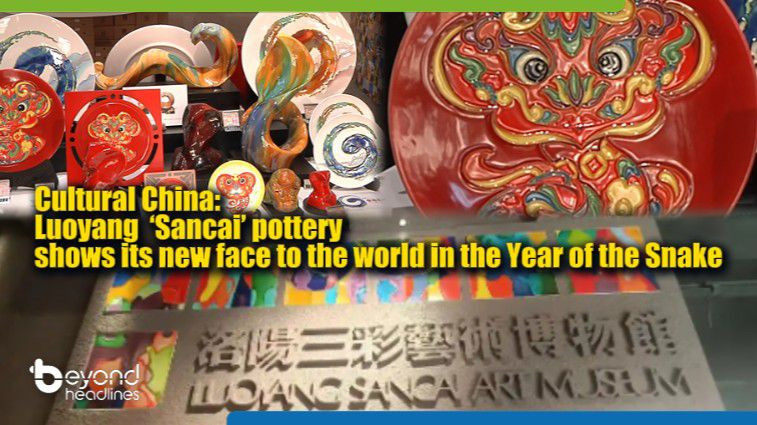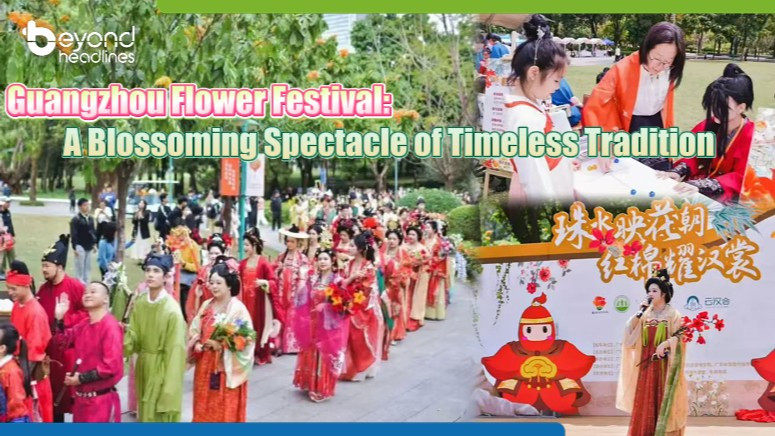"Sancai," also called "Tri-Color Glazed Ceramics," refers to the Chinese ceramic art of making pottery artifacts that feature three or more colors. In the Year of the Snake, the Luoyang Sancai Art Museum is introducing a whole new face of Sancai to the world.
The Luoyang Sancai Art Museum is the well-known research, production, and exhibition center for 'Sancai' art in this part of China. It produces and releases artworks with a zodiac theme. This year, the museum has made a special effort with the snake theme, and it seems that its snake-themed zodiac offerings may be particularly popular.
In Chinese culture, the snake embodies mystery and wisdom. The designers incorporated well-wishing elements such as the traditional auspicious patterns of the Ruyi scepter, lotus flower, and fish with the snake to convey vibrant colors, delicate craftsmanship, and the good wishes of ‘Sancai’ pottery.
The stunning ceramic decorations, paintings, and dishware that blend traditional and modern designs have attracted a lot of customers. This is a rare instance where promoting traditional culture has actually drawn young people in.
The advanced ancient Chinese pottery-making techniques that produced "Sancai" form an integral part of traditional arts, fine crafts, and the historical development of Chinese ceramics. Sancai can be traced back to the Han Dynasty, where artisans used earth and iron as raw materials and achieved varied clay-colored pottery (yellowish, brown, and olive green) by firing them in a reducing atmosphere. If "Sancai" was ever a well-kept secret, it is no longer. Sancai techniques, skills, and knowledge are now international. However, those who employ them might not always recognize the art they create as Sancai.
The 'Sancai' was a period of rapid development during the Tang Dynasty regarding both the firing techniques and the artistry of the pottery. As such, 'Tang Sancai', also known as 'Tang Tri-Color Glazed Ceramics', became widely known and enjoyed in its fame.
Without the city of Luoyang, rich in history, the story of 'Sancai' would be incomplete. Here, in Luoyang, 'Sancai' pottery was first found, and here it was developed and flourished, and so now the official name for the multicolored Chinese pottery that we call 'Sancai' is 'Luoyang Sancai,' in spite of it being named after a dynasty.







![[Cultural China] Zhuang Traditions Come Alive: Ancient Wedding Reenacted in Guangxi](https://img.beyondheadlines.hk/articles/cover/20250423/b44b2f006d12a6ea5d7330b589da39cf.jpg!w800)



![[Cultural HK] Scale New Heights of Fun at Hong Kong's Cheung Chau Bun Festival!](https://img.beyondheadlines.hk/articles/cover/20250425/66bde2371a8724463a7711071cf76aa1.jpg!w800)
